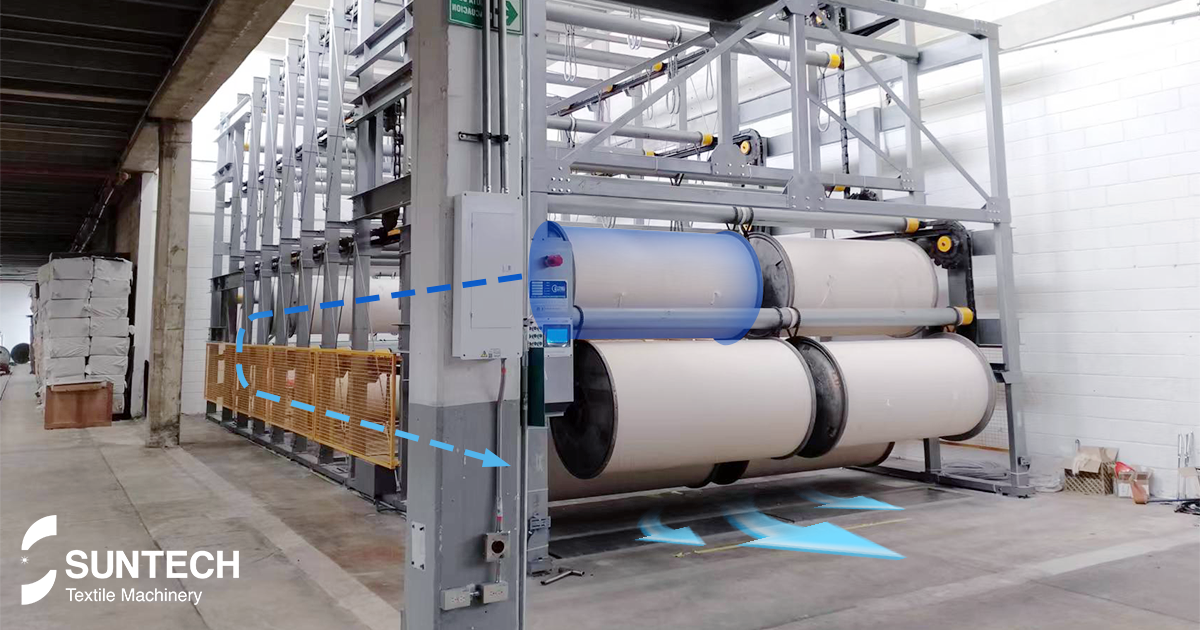Operating heavy machinery like beam stackers inherently involves risks, making safety protocols not just a suggestion, but a critical necessity. Ensuring a safe working environment requires a proactive approach, focusing on both the equipment's safety features and responsible operational practices.
Why Beam Stacker Safety is Non-Negotiable
Ensuring the safety of beam stackers is crucial, not just for regulatory compliance but for the fundamental protection of life and operational integrity.
Human Life
The primary reason for rigorous safety protocols in operating beam stackers is to safeguard human life. Mishandling of heavy machinery like beam stackers can lead to severe injuries or even fatalities. Ensuring operational safety is not merely about compliance with legal standards; it is about valuing human life and maintaining a productive workforce. Practices such as regular training and adherence to operational guidelines are crucial. The Occupational Safety and Health Administration (OSHA) underscores the importance of proper training and strict compliance with safety protocols to prevent fatal accidents in industrial settings .
Productivity and Downtime
Operational disruptions caused by accidents can significantly hamper productivity. Downtime not only slows down production but also causes logistical bottlenecks that can affect various facets of a business operation. Ensuring that beam stackers are operated safely minimizes these costly interruptions. Industry best practices include conducting regular inspections and maintaining equipment to prevent unforeseen malfunctions and accidents, which are pivotal in maintaining continuous productivity.
Financial Implications
Accidents involving beam stackers can lead to extensive financial strain due to damage repair costs, increased insurance premiums, and potential litigations. Effective safety measures and compliance with standards like ASME B30.20, which dictates manufacturing and operational standards for lifting equipment, can mitigate these costs. This not only involves adhering to maintenance schedules but also upgrading equipment to meet the latest safety standards .
Company Reputation
A company's commitment to safety is directly linked to its reputation. A strong safety record enhances trust and reliability in the eyes of customers and business partners. Conversely, frequent incidents can tarnish a company's image, impacting its ability to attract new business or retain existing clients. Thus, investing in safety technologies and training, and adhering to recognized safety standards is crucial. This includes integrating advanced monitoring systems and collision avoidance technologies which not only prevent accidents but also demonstrate a company's dedication to maintaining a safe working environment.

Key Safety Concerns in Beam Stacker Operations
To address the pivotal concerns in beam stacker operations effectively, it's imperative to understand the specific safety challenges involved.
Heavy Load Handling
For beam stackers tasked with managing ultra-heavy loads, robust safety protocols are essential. Operators must receive comprehensive training to accurately assess load weights and comprehend the equipment's capacity limits. A pre-operation checklist is vital to ensure proper load distribution and verify the integrity of lifting chains. This approach helps in minimizing the risk of overloading and subsequent equipment failure, thereby ensuring both safety and operational efficiency .
Preventing Chain Failures
The durability of load chains is crucial in beam stacker operations. Regular maintenance, including detailed inspections for any signs of wear and tear, adequate lubrication, and strict adherence to the manufacturer’s guidelines, are all mandatory practices. Additionally, employing stackers equipped with auto chain synchronization detection can provide an added safety layer. These systems monitor chain activity continuously and can preemptively alert operators to potential malfunctions, thereby preventing accidents before they occur .
Collision Avoidance
In dynamic work environments, maintaining a high level of situational awareness is imperative. Beam stackers that incorporate photoelectric monitoring systems and anti-collision alarms help significantly reduce the risk of accidents. These systems continuously scan the surrounding area and alert operators of potential hazards, and in critical situations, they can automatically halt machine operation to prevent collisions. Implementing clear floor markings and designated pathways for stackers also plays a crucial role in enhancing navigational safety and ensuring a well-organized work environment .
Protecting Personnel
Establishing a secure zone around operating stackers is crucial for personnel safety. Utilizing safety measures such as light curtains and guard fences provides physical barriers that restrict unauthorized access to the stacker's operational area. This setup not only protects personnel by preventing accidental or unauthorized entries but also helps in maintaining focus on safety protocols during stacker operation, thus significantly minimizing the risk of injuries .
Implementing these safety measures requires a combination of advanced technology, rigorous training, and strict procedural adherence, all of which contribute to creating a safer and more efficient working environment.
Cultivating a Safety-First Culture in Beam Stacker Operations
Building a culture that prioritizes safety in beam stacker operations is essential for minimizing risks and enhancing efficiency. This process involves key strategies such as comprehensive operator training, regular safety audits, and fostering open communication.
Comprehensive Operator Training
Creating a safety-first culture starts with comprehensive training for all operators. Effective training programs go beyond simple machine operation; they encompass safe loading techniques, emergency response procedures, and the critical importance of conducting pre-operation inspections. To keep pace with technological advancements and changes in operational procedures, training must be an ongoing process, not a one-time event. This ensures that all personnel are up-to-date with the latest safety protocols and equipment functionalities .
Regular Safety Audits
Conducting regular safety audits is another pillar of a robust safety culture. These audits serve multiple purposes: they help identify potential hazards, evaluate the effectiveness of existing safety measures, and verify compliance with relevant safety regulations. The insights gained from these audits facilitate continuous improvement in safety practices, making them an indispensable tool for maintaining high safety standards in operations involving beam stackers .
Open Communication
Promoting open communication across all levels of the organization is crucial for a proactive safety environment. Encouraging the reporting of near misses and safety concerns by operators, supervisors, and management leads to timely identification and resolution of potential safety issues. This transparency is vital, as it empowers everyone within the organization to contribute to safety discussions and initiatives, fostering a workplace where safety is seen as a collective responsibility.
By integrating these elements into daily operations, organizations can cultivate a culture that prioritizes safety above all else, ensuring that safety practices are not just followed, but ingrained in the organizational ethos.
Conclusion
Ensuring beam stacker safety is not merely a box to be checked, but an ongoing commitment that requires a multi-pronged approach. By investing in advanced safety features, implementing rigorous safety protocols, and fostering a proactive safety culture, businesses can protect their most valuable assets—their employees—while ensuring efficient and productive operations. This holistic approach to safety not only prevents accidents but also enhances operational efficiency, proving that safety is integral to business success.








